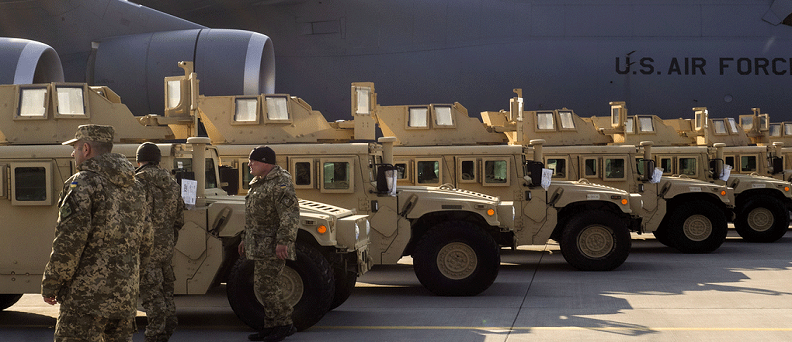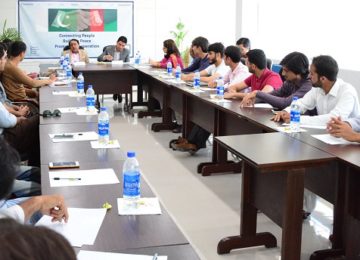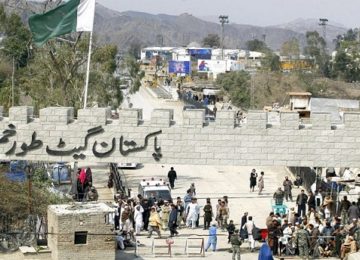It appears that the real winners of the Afghan war may be the shady contractors who continue to build their profits through misreporting in the US-funded training and mentoring programs Afghan security forces due to an inadequate monitoring system of accountability. As revealed in the latest performance evaluation analysis by SIGAR, the $457.5 million training programs funded by the US Department of Defense (DOD) for building the intelligence capability of Afghanistan National Defense and Security Forces (ANDSF) failed to meet their stated objectives, especially in terms of showing any indication of improvement in the overall intelligence operations, due to increased corruption by the contractors and subcontractors involved. The two programs, namely Legacy Afghanistan R&D program and the Afghanistan Source Operations Management (ASOM) program, relied heavily on the contractors which implemented them to measure the readiness of intelligence training sites for transition to the Afghan government thus presenting faulty data to determine the efficiency of the Afghan forces’ intelligence capability.
Furthermore, the report reveals, an absence of defined outcomes or performance metrics to measure the effectiveness of these programs by was also found, raising the question if the amount spent was actually even worth the cost. The Legacy R&D program, for example, did not define any outcomes or provide any adequate performance metrics while its stated cost valued at $314.4 million. For monitoring their performance, the Army Contracting Command (ACC) appointed the Combatting Terrorism Technical Support Office (CTTSO) as the contracting officer’s technical representative which, on its part, simply relied in its assessment of Imperatis Corporation, the contractor (previously known as Jorge Scientific Corporation until 2013), and subcontractor New Century Consulting Limited (NCC) which had actually been submitting false invoices, while also relying on some self-assessments created by its mentors and compliance officers.
SIGAR particularly reviewed the reports and the metrics provided by CTTSO, RAND and NCC and found them to be subjective in their evaluation. Of the 125 Legacy and ASOM intelligence training and mentoring sites, SIGAR found only 59 (47 percent) to be rated as ready for full transfer to the Afghan government while the remaining 66 were transferred while they were still not transitioned or having varying levels of capability.
SIGAR also discovered that the contractor, the Imperatis Corporation, and the subcontractor, NCC, did not even maintain complete training records. SIGAR used the existing incomplete records that were present to determine whether ANDSF officers completed the required number of courses to be an intelligence instructor or trainer to possibly gauge the success of the Legacy program. It was revealed that of 24 police intelligence student trainers, only 10 completed all nine courses required to be a Ministry of the Interior trainer. Furthermore, none of the four Afghan National Army student trainers completed the six courses required for being a Ministry of the Interior trainer. Moreover, five out of six Afghan National Army student instructors enrolled for training to become a Ministry of Defense Instructor did not complete any of the four required courses.
SIGAR’s analysis reveals that the Imperatis failed to monitor and evaluate the costs of its subcontractor and, in the process, misrepresented some costs as permissible and allocable when it submitted its invoices. As a result, the Imperatis added to the costs of those contracts and held the US Department of Defense payable for costs that the US government was not legally responsible to pay, thereby misappropriating the US public money. Additionally, Imperatis charged on average more than $1.8 million per month under the Legacy Afghanistan contract from March 2011 to December 2011, even though the training courses it was supposed to conduct were cancelled in February 2011. Furthermore, the NCC deployed staff and began charging for the costs under the Legacy Afghanistan, Kabul, and South contracts, even before the ACC awarded the contracts to contractors.
As per SIGAR’s previous reports, the intelligence capability of the Afghan security forces continues to be stunted despite the provision of training and mentoring programs through US aid. In 2015 assessments of Afghan intelligence for example, the Ministry of Defense and the Ministry of Interior intelligence capabilities were rated as “partially capable” but none were actually rated as fully operational. In June 2016 DOD’s report again, persistent gaps in the capability of Afghan security forces’ intelligence collection and dissemination proved to be hampering factor in their ability to maintain security and stability. The recent SIGAR’s audit report, too, reveals that corruption as a result of a faulty monitoring system in the US aid provided to Afghan government needs to be accounted for to achieve any effectiveness in these programs and maximize the intelligence capability of the Afghan security forces for any tangible security improvement in the war-torn country.
To view the SIGAR report, click here.
The author Sitwat Waqar Bokhari is a Research Fellow at the Center for Research and Security Studies, Islamabad.








